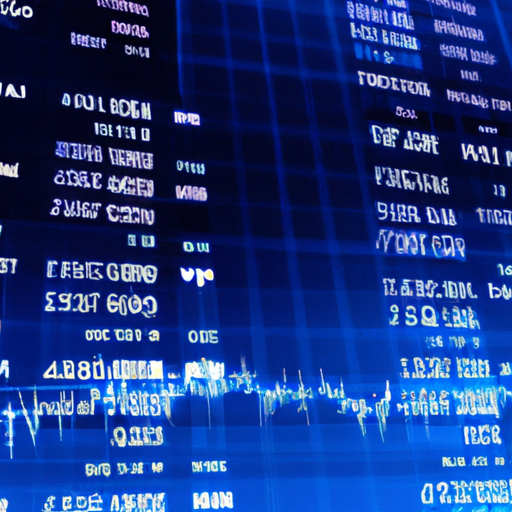Unveiling The World Of Automated Trading Programs
Have you ever wondered how modern traders manage to handle multiple trades across various markets simultaneously? The answer lies in automated trading programs. These ingenious tools have revolutionized the trading landscape, making it possible for both novice and seasoned traders to optimize their strategies with minimal manual intervention.
What Are Automated Trading Programs?
Automated trading programs, also known as algo trading software, are systems that use pre-set rules to execute trades on your behalf. These rules are usually based on price, timing, quantity, or any mathematical model.
Think of them as assistants who tirelessly work around the clock, ensuring that you never miss a lucrative trade opportunity.
Imagine you’re having dinner with friends when a sudden market opportunity arises. With automated trading programs in place, you wouldn’t need to excuse yourself from the table. Instead, your algorithmic trading system would seamlessly take care of the trade for you.
The Mechanics Behind Automated Trading Programs
How do these magical programs work? At their core, automated trading programs rely on mathematical models and statistical analyses to make decisions.
They follow predefined algorithms that analyze market data in real time and execute trades at lightning speed. This is particularly useful in high-frequency trading, where milliseconds can make a difference between profit and loss.
One popular example is Metatrader 4 (MT4). This widely-used platform allows traders to create and run their own scripts and expert advisors (EAs) to automate their trading strategies.
By using such platforms, traders can backtest their strategies against historical data before deploying them in live markets.
Benefits Of Using Automated Trading Programs
There are numerous advantages of using automated trading programs:
– Consistency: Human emotions can often interfere with decision-making processes. Automated systems stick strictly to predefined rules without getting swayed by fear or greed.
– Speed: Given that these systems operate at digital speeds, they can execute orders much faster than a human ever could.
– Backtesting: Most platforms offer backtesting options so you can test your strategies against historical data before going live.
– Diversification: Automated systems allow you to trade multiple accounts or strategies simultaneously, spreading your risk across various assets.
Jane Doe from New York shares her experience with automated trading: “Switching to an automated system has been a game-changer for me. Not only does it save me time, but it also ensures I don’t miss out on potential gains while I’m busy with other commitments.”
Challenges And Risks Involved
While there are significant benefits associated with automated trading programs, it’s essential to be aware of potential pitfalls:
– Technical Failures: Like any other software application, algo trading software is susceptible to technical glitches which might lead to unintended consequences.
– Over-Optimization: Sometimes referred to as ‘curve fitting,’ this occurs when a strategy performs exceptionally well on historical data but fails miserably in live markets due to its overly tailored nature.
– Monitoring Required: Although automation reduces manual labor significantly, occasional supervision is necessary to ensure everything runs smoothly.
John Smith recalls his early days experimenting with algorithmic trading: “I once faced an unexpected technical issue that led my algorithm astray just because I wasn’t keeping an eye on things regularly.”
Getting Started With Automated Trading
Are you intrigued by the potential these systems hold? Here’s how you can get started:
1. Research And Education: Understand different types of strategies available – whether it’s trend-following or mean-reversion – learn about what suits your style best.
2. Choose A Platform: Platforms like MetaTrader 4 provide robust environments for designing and testing your algorithms before going live.
3. Develop Your Strategy: Utilize coding languages like MQL4 (specific for MT4) or Python (for more general use) depending upon complexity required by your strategy.
4. Backtest Thoroughly: Use historical data provided by platforms such as MT4 ensuring robustness under changing market conditions.
5. Start Small: Deploy initially within controlled parameters avoiding large capital outlays until confident about performance consistency over time frames tested previously.
As Jack Thompson puts it after successfully integrating his first algorithm into MT4 platform – “Starting small helped me recognize nuances particularities within my chosen strategy refining further optimizations avoiding significant losses initially.”
The Future Of Automated Trading Programs
Looking ahead into future prospects holds immense promise; advancements within AI & machine learning fields likely enhancing capabilities exponentially offering sophisticated predictive analytics identifying profitable opportunities earlier than current methodologies permit today!
Lisa Taylor enthuses optimistically regarding upcoming trends saying “AI-driven predictive modelling changing game altogether providing edge previously unimaginable traditional means!”
In conclusion adopting automation pivotal maintaining competitive edge dynamic evolving landscape; incorporating right blend technology human oversight balance crucial ensuring sustained success longevity endeavors embarked! So why wait? Dive headfirst embrace transformative power unlocking untapped potentials awaiting exploration journey navigating exciting realms automated possibilities beckon forth beckoning eagerly anticipated venture unfolds revealing bountiful rewards reaped manifold efforts diligently invested therein!”

